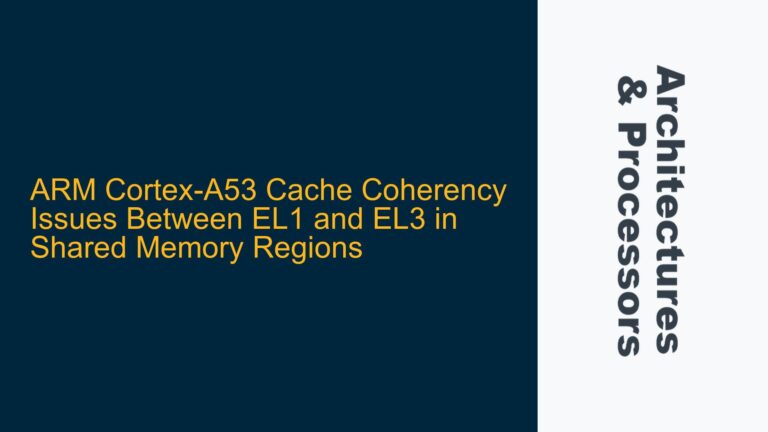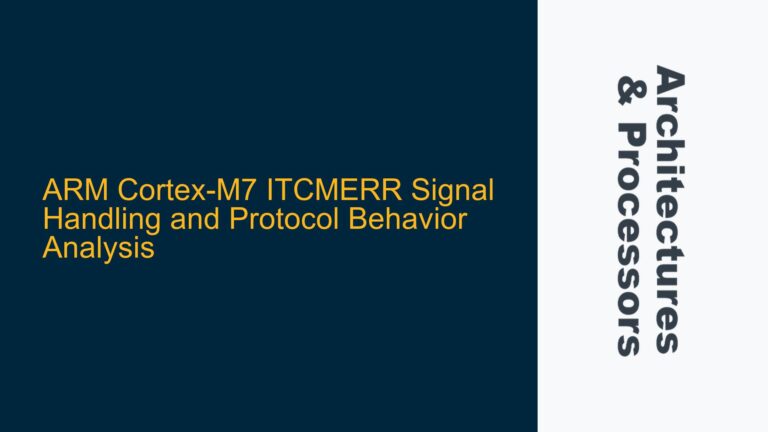APB PADDR: Addressing Peripheral Registers in AMBA Protocol
The Advanced Peripheral Bus (APB) is a key component of the ARM Advanced Microcontroller Bus Architecture (AMBA) protocol family, designed for low-power, low-complexity peripheral communication. At the heart of APB lies the PADDR signal, which serves as the address bus for selecting specific registers within a peripheral. This signal is critical for enabling communication between the system master and the peripheral devices, ensuring that data is written to or read from the correct register location.
In a typical APB-based system, peripherals are memory-mapped, meaning each register within a peripheral is assigned a unique address. The PADDR signal carries this address information, allowing the system to target specific registers during read or write operations. For example, if a peripheral has multiple configuration registers, the PADDR signal ensures that the correct register is accessed. Without PADDR, the system would lack the ability to differentiate between registers, leading to potential data corruption or incorrect configuration.
The PADDR signal operates in conjunction with other APB signals, such as PSEL (Peripheral Select), PENABLE (Transfer Enable), PWRITE (Write Enable), and PWDATA (Write Data). When the master initiates a transaction, it sets the PADDR to the desired register address, asserts PSEL to select the target peripheral, and uses PWRITE to indicate whether the operation is a read or write. PENABLE is then asserted to complete the transfer. This coordinated signaling ensures that data is accurately routed to or from the intended register.
Peripheral Register Mapping and PADDR Utilization
The PADDR signal is essential for peripherals that contain multiple registers, as it enables precise addressing of each register. Consider a UART peripheral with registers for baud rate configuration, data transmission, and status monitoring. Each of these registers is assigned a unique address within the peripheral’s address space. When the system needs to configure the baud rate, it sets the PADDR to the address of the baud rate register, asserts PSEL to select the UART peripheral, and writes the desired value to PWDATA. The PADDR signal ensures that the data is written to the correct register, preventing unintended modifications to other registers.
In cases where a peripheral has only one accessible register, the PADDR signal may seem redundant. However, even in such scenarios, PADDR plays a crucial role in maintaining consistency with the APB protocol. The PSEL signal alone can indicate that the peripheral is being addressed, but PADDR ensures that the transaction adheres to the standard APB signaling sequence. This consistency is vital for interoperability and simplifies the integration of peripherals into larger systems.
Moreover, PADDR is not limited to memory-mapped registers. It can also be used to address non-memory resources, such as control or status registers in hardware accelerators or custom IP blocks. In these cases, the PADDR signal serves as a mechanism for selecting specific functions or resources within the peripheral. For example, a hardware accelerator might use PADDR to select between different processing modes or to access specific data buffers.
Addressing Non-Addressable Peripherals and PADDR Considerations
While PADDR is primarily used for addressing registers, its role in systems with non-addressable peripherals requires careful consideration. Non-addressable peripherals, such as simple GPIO blocks or interrupt controllers, may not have multiple registers to address. In such cases, the PADDR signal can be repurposed or ignored, depending on the system design.
For peripherals with a single register, the PADDR signal can be tied to a fixed value, as the address does not change. This approach simplifies the design while maintaining compliance with the APB protocol. Alternatively, if the peripheral does not require any addressing, the PADDR signal can be left unconnected, and the PSEL signal can be used to initiate transactions. However, this approach should be used cautiously, as it may lead to compatibility issues with standard APB interfaces.
In more complex systems, PADDR can be used to implement hierarchical addressing schemes. For example, a peripheral with multiple sub-modules might use the higher-order bits of PADDR to select the sub-module and the lower-order bits to address specific registers within the sub-module. This approach enables efficient resource management and reduces the number of PSEL signals required.
Troubleshooting PADDR-Related Issues in APB Systems
When designing or verifying APB-based systems, PADDR-related issues can manifest in various ways. Common problems include incorrect register addressing, data corruption, and transaction failures. These issues often stem from misunderstandings of the PADDR signal’s role or improper implementation of the APB protocol.
One frequent issue is the misalignment of PADDR with the peripheral’s register map. This can occur when the address decoding logic is incorrectly configured, leading to unintended register accesses. To resolve this, designers must carefully review the peripheral’s address map and ensure that the PADDR signal is correctly decoded. Simulation tools can be used to verify that the PADDR signal aligns with the intended register addresses.
Another common problem is the improper handling of PADDR in peripherals with a single register. If the PADDR signal is not tied to a fixed value or is left unconnected, it can cause unpredictable behavior. Designers should ensure that the PADDR signal is properly managed, even in simple peripherals, to maintain protocol compliance and avoid integration issues.
In systems with hierarchical addressing, issues can arise from incorrect bit allocation in the PADDR signal. For example, if the higher-order bits are used to select sub-modules, but the decoding logic is misconfigured, the system may fail to access the intended sub-module. To address this, designers should thoroughly test the address decoding logic and verify that the PADDR signal correctly selects the desired sub-modules and registers.
Optimizing PADDR Usage for Performance and Power Efficiency
The PADDR signal plays a significant role in optimizing the performance and power efficiency of APB-based systems. By carefully managing the address space and minimizing unnecessary address transitions, designers can reduce power consumption and improve system responsiveness.
One optimization technique is to group related registers within the same address range. This reduces the number of address transitions required to access multiple registers, minimizing power consumption. For example, if a peripheral has several configuration registers, they can be placed in consecutive addresses, allowing the master to access them with a single address setup.
Another technique is to use address aliasing to simplify address decoding. By mapping multiple addresses to the same register, designers can reduce the complexity of the decoding logic, improving performance and reducing power consumption. However, this approach should be used judiciously, as it can lead to confusion if not properly documented.
In low-power designs, the PADDR signal can be used to implement power gating or clock gating for unused peripherals. By monitoring the PADDR signal, the system can determine when a peripheral is not in use and disable its clock or power supply. This approach is particularly effective in systems with a large number of peripherals, where significant power savings can be achieved.
Conclusion: Mastering PADDR for Robust APB Designs
The PADDR signal is a fundamental component of the APB protocol, enabling precise addressing of peripheral registers and ensuring reliable communication between the system master and peripherals. By understanding its role and optimizing its usage, designers can create robust, efficient, and scalable APB-based systems. Whether addressing memory-mapped registers, non-addressable resources, or implementing hierarchical addressing schemes, the PADDR signal is indispensable for achieving the desired functionality and performance in ARM-based SoCs.






